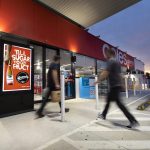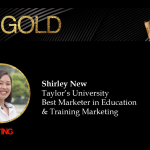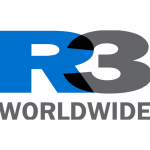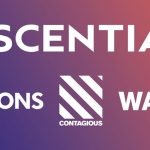Remi Roques, General Manager APAC for Broadsign talks intelligence in OOH
Even though we live in a digital world, static inventory in OOH remains prominent. How would you describe the static offering today and can you identify ways to modernise the static offering for OOH operators to ensure the medium continues to evolve and not be sidelined by digital?
Static inventory is becoming less sought-after in out-of-home, with premium locations quickly converting to digital.
While a digital media owner would be considered of medium size with a few hundred digital screens, a static media owner would need thousands of panels to be seen as a medium-sized company – and to generate as much revenue.
Digital screens require technical IT expertise to be run and managed. Static posters require organisation, processes and larger teams. We could compare displaying ads on digital screens to providing the technology to send emails. On the opposite, posting on a static screen can be compared to the Post offices around the world carrying a letter. The first one requires small teams of technical software engineers. The second one needs an excellent organisation with mail carriers all around the world to collect and dispatch letters.
Maximising panel rates and occupancy are essential in Static to cover the costs of posting and managing the inventory. Margins can be tight. As a result, knowing the audience in front of the panels is becoming more and more critical.

What role does an intelligent adtech platform play in the success and effectiveness of OOH campaign executions?
An intelligent adtech platform offers automation, visibility and control.
The media owner sales team has visibility of the panel availability at all times and can sell accordingly. Panel rates are controlled centrally by the management teams, and client discounts are managed. Sales reps can generate a proposal in a few minutes by entering the campaign details, objectives and targeted bookings in the platform.
For the media planner, an intelligent platform gives the tools to schedule content quickly according to a set of rules. Content is automatically pushed to the digital screens, and work orders are automatically generated for bill posters.
Production and posting teams use interfaced systems and mobile devices to control the stick availability, post at the right location, report incidents and take POP photos.
Proof of performance is handled within the platform with multiple client-facing reports automatically generated or accessible through a web-interface.
The finance team have access anytime to the campaign, generate a list of invoices following a specific billing schedule and calculate lease payout within the platform.

Can you give us an example of a bespoke advertising campaign where your intelligent adtech platform and innovative software tools have played an integral part in business growth and helped drive the entire OOH workflow?
The commercial partners of Shopper Media Group required a spot in the loop on which they could schedule content themselves. Scheduling content to the screens is usually a complicated task done by the chartist team of the media owner. Playlists are prepared and uploaded to the screens. Our intelligent adtech platform gives a portal to SMG’s commercial partners to push content to the screens themselves without the intervention of the media owner’s team.
Another example would be one of our client media owners in Asia. The client used Broadsign’s Ayuda platform to execute on a campaign targeted at the main capital cities of Thailand with specific creative for each location. The campaign had a very tight timeframe for execution. The adtech gives the tools to the sales team to quickly pick the right available panels based on the objectives of the campaign. The contract was generated automatically from the system. The campaign managers could upload creative and schedule content based on location within the platform. The production team was automatically informed of the required quantity of posters and delivery addresses of the different warehouse based on panel quantities. Billposters received work orders for installation on their hand-held devices and take proof of execution directly from their smartphone, uploaded in the platform. At the end of the month, the finance team invoiced the campaign on a lunar calendar schedule and created the revenue share calculations within the platform for invoicing by the landlords.
What do you think is needed for the DOOH to become a mainstream media buy in Asia?
DOOH brings change and change brings opportunity. This transition can only be exciting news for the medium. We just need to ensure the right measures are in place in order for it to deliver real growth to publishers and advertisers.
- Digital screens need to become more affordable.
- Better audience information to increase CPM by recognising OOH as a premium medium and giving confidence to advertisers of a tangible ROI.
- The demand for programmatic needs to be there. Today, programmatic mainly focuses on DOOH, and there is no programmatic solution for static.
- We need to see an increased appetite and willingness to try new things from agencies and advertisers.
- Day-parting must be made available for OOH
- It is essential to have dynamic content and conditions (ex: weather-triggered campaigns, contextual content…)
DOOH starts with educating the market on the benefits and opportunities and should be something required by councils/location jurisdiction.

In your opinion what would be the next big thing in OOH for the Asian market in 2020?
2020 is looking promising. I believe that we will start to see OOH spends in Asia increasing faster than the world average as we witness the rise of programmatic selling and delivering.
Consolidation will also be taking the centre stage in the South-East Asia market bringing a dynamic change in the sector and prepare the market for digital transformation. I am excited about what’s to come.
Connect with Remi Roques here.
Discover Broadsign here.
MARKETING Magazine is not responsible for the content of external sites.









